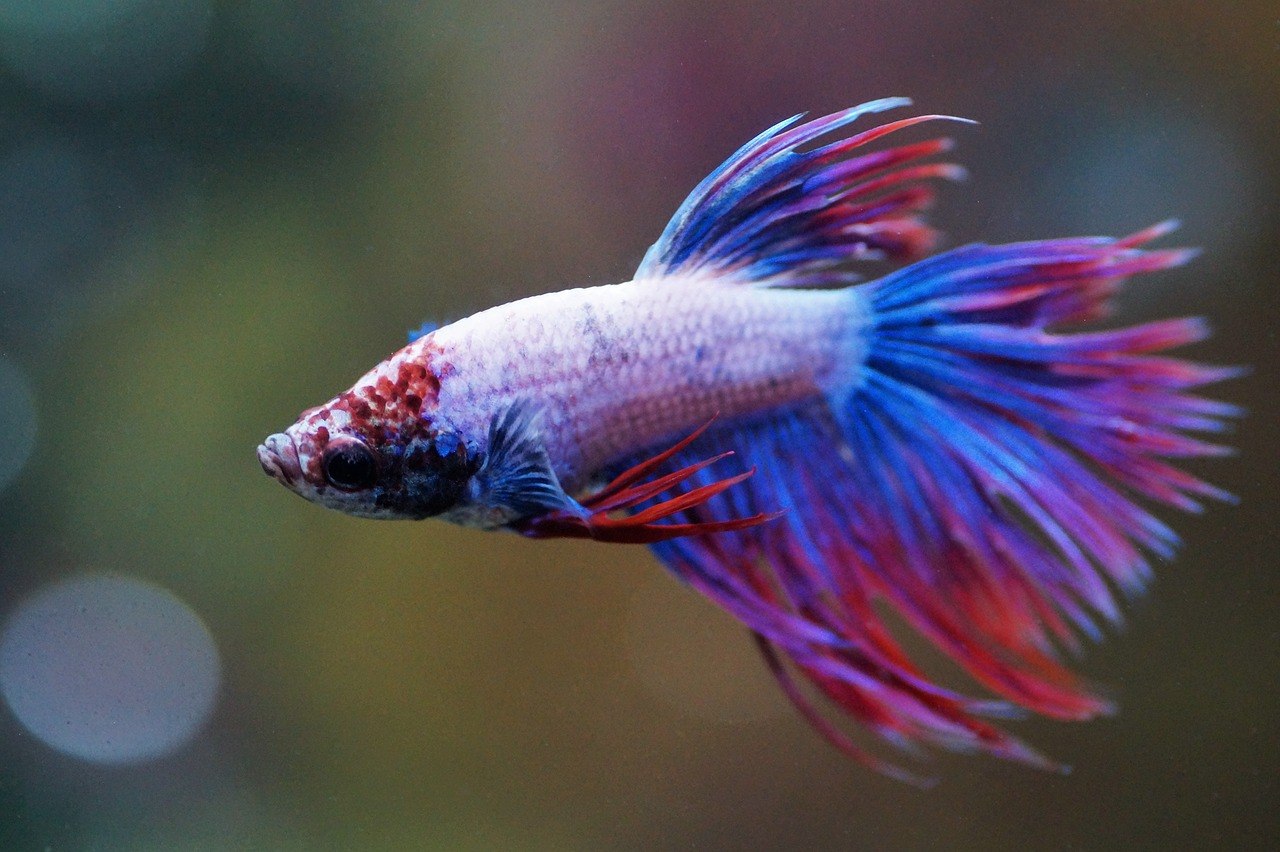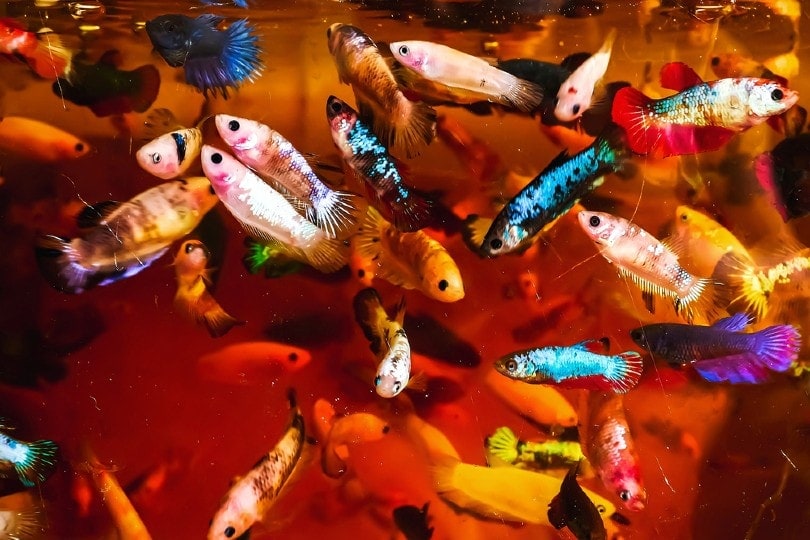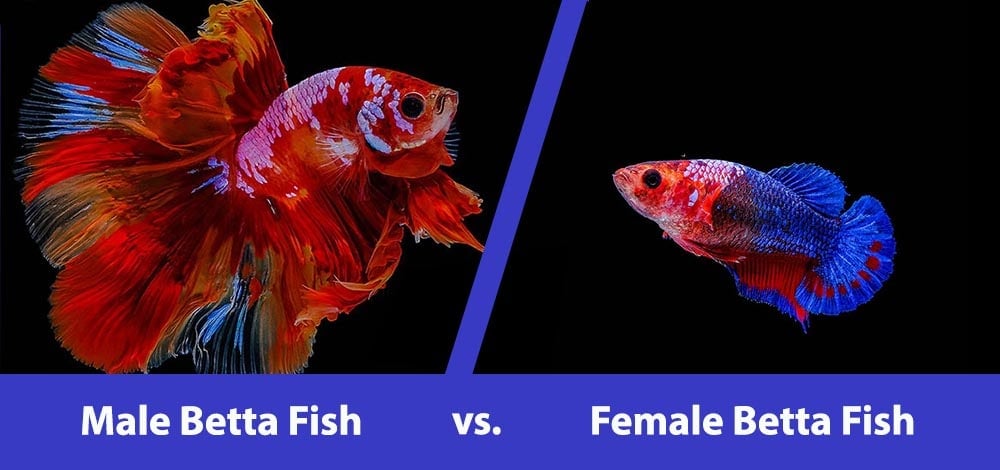The Natural Habitat of Betta Fish: History, Diet & FAQs

Updated on

Betta fish are the second most popular aquarium fish after the goldfish but where do betta fish live originally? this post covers their natural habitat and how they become such a popular aquarium choice.
The Betta fish is also known as the Siamese fighting fish, and in common tongue many people simply refer to it as a Betta. Technically speaking, the scientific name for Betta fish is Betta Splendens, and they are part of the gourami family of fish.
The gourami group of fish comprises a family of fish known as Osphronemidae. These are freshwater fish which are native to many parts of east and central Asia so technically that’s where “they live” or at least originated from.
Betta Fish Natural Habitat
Where Do Betta Fish Live In The Wild?
Yes, and to be precise, the Betta fish is native to the Mekong basin in countries such as Laos, Cambodia, Vietnam, and Thailand. Betta fish in their natural habitat can most often be found in still or standing waters such as in flood plains, canals, and rice paddies.
Interestingly enough, Betta fish are referred to as pla-kad in Thai, which means “biting fish”. There are indeed various different breeds of Betta fish, something which will be discussed in the following sections.
There is a good reason why Betta fish are called Siamese fighting fish, and it is because they are extremely territorial fish. They are not so much territorial and aggressive towards other species of fish, but with each other is a whole different story.
When there are two male Betta fish close to each other, they will usually always attack one another. If there is no means of escape for the Betta fish on the losing end of the battle, it will almost always result in the death of the weaker Betta fish.

Betta History: How They Became Popular Aquarium Pets
Due to their highly aggressive nature, these fish were first caught and bred in captivity before the 1800s for the purposes of fish-fighting competitions, akin to chicken or dog fighting today. In fact, in 1840, the King of Thailand issued licenses to people who wanted to collect these fish for the purposes of fighting.
After many years, in most places these fighting competitions were outlawed, but people still continued to collect the Betta fish due to its beauty and fairly easy maintenance when kept as a domestic pet.
In 1892 a French aquarist named Pierre Carbonnier imported the first Betta fish to France, and in 1896 the first specimens were brought to Germany. From there, the popularity of Betta fish skyrocketed, and they slowly spread around the world as an extremely popular home aquarium fish.
Interestingly enough, the Betta fish has also been known to be an invasive species, whether by accident or the intentional release by irresponsible fish owners. In January of 2014, a large population of Betta fish was found in in the Adelaide River flood plain in a Northern Territory of Australia.
Nobody really knows how they got there, most likely due to being released by owners and reproducing, but they have become a threat to native Australian fish, frogs, and plant life too.
All of that being said, since they were first discovered, both for their beauty and fighting skill, Betta fish has quickly become an extremely popular choice of fish for aquarium lovers around the world.

Wild Betta’s Diet in Its Natural Habitat
When it comes to Betta fish in the wild, they do have a fairly varied diet. One thing is for sure, which is that they are quite voracious eaters. To be exact, Betta fish are omnivores, which means that the will eat both plant matter and protein from live animals.
Some of their favorite foods in the wild include all kinds of insects and insect larvae. More or less, if the bug can fit into the mouth of the Betta fish, it will eat it.
Insect larvae are a close second to the fully-grown insects. They do also like to eat some plant matter, but most of the Betta fish’s diet is meat.
How Do Betta Fish Mate In The Wild?

Aside from “Where do fighting fish live?” The next most common question we often get is “how do they mate in the wild?” Well, when it comes to Betta fish and mating, there is a bit of a ritual involved.
This will involve the male Betta fish building a bubble nest consisting of mucus-coated air bubbles near the surface of the water. The male will then locate a suitable female and flare up his fins, chasing her around in order to gain acceptance.
The female Betta fish will resist for a bit, but will then usually accept the male’s attempts after several minutes (sometimes much longer) of this courtship ritual. The male will then roll the female over and fertilize the eggs while the female releases them into the bubble nest.
You Might Also Be Interested In:
- 650 Betta Fish Names for All Different Types and Colors
- 10 Best Betta Fish Tanks – Reviews & Top Picks
Featured Image Credit: ivabalk from Pixabay










